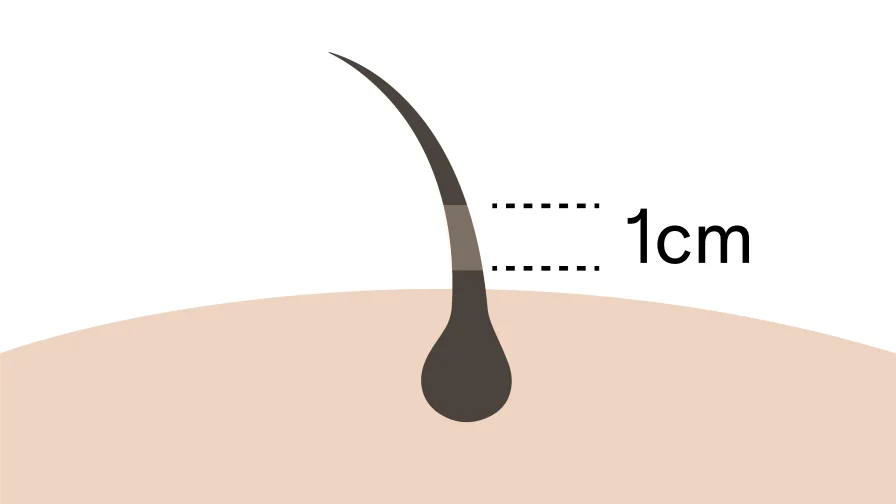- Drug and Alcohol
Court approved hair, nail, blood drug and alcohol testing - Maternity and Paternity
Ministry of Justice approved legal DNA testing - Wider Relationships
Understanding second and third degree familial connections - Immigration
Home Office approved testing for visas and passports - Expert Services
Court standard expert witness reporting - International DNA Collection
Home Office approved DNA collection from overseas
Hair Drug Testing
AttoLife specialises in detecting many substances, including Amphetamines, Cocaine, Opiates, Benzodiazepines, and Cannabis. Hair tests are the gold standard in assessing substance use over an extended time window.
- UKAS accredited to ISO17025
- Provides a detailed history of substance intake

01
View Historical Usage
Offers a detailed history of drug intake, beneficial for ongoing cases or treatment plans.
02
Non-Invasive
Head hair samples are collected discreetly and the process can be carried out in any location.
03
Legally Defensible
Hair samples are taken directly by a professional, ensuring a full chain of custody.
Why Hair Testing?
Hair testing is a powerful tool in drug detection due to its ability to reveal substance use over a longer period, typically up to twelve months. Unlike urine or blood tests that only provide more recent short-term insight, hair testing can capture a comprehensive usage pattern, offering invaluable insight for legal cases, employment screening, and medical evaluations.
Hair drug testing is considered highly accurate in situations where a long detection window is crucial. It's highly valued for its accuracy, ability to provide a detailed usage history, and its resistance to evasion tactics (like abstaining for a few days to pass a test). The process is minimally invasive, and the results are widely accepted in professional and legal contexts, making it an indispensable tool for solicitors and local authorities.

How Hair Testing Works
Step 1
Identify Collection Area
When collecting head hair, our samplers will always try and take hair from the ‘posterior vertex region’ of the head (back of the crown). This is where the hair growth is often most consistent and thickest, making it more likely that we will have enough sample weight to test. The back of the head is also more discreet for cosmetic purposes. In cases where head hair is not available, body hair can be used as an alternative, such as arm, leg or chest hair.

Step 2
Collect Hair Sample
We need two samples of hair which each need to have the thickness of a pencil when held together. This requires drawing hair from a larger area of the scalp. This may sound like a lot, but without a full sample we may not be able to complete the analysis. The sample is cut as close to the scalp as possible to ensure suitability for testing.

Step 3
Explore Usage Timeframe
Head hair grows 1 cm per month on average. Therefore, if we collect 6 cm of hair, we can explore a substance usage pattern over 6 months. Alternatively, body hair grows more slowly, meaning a 3 cm sample would equate up to approximately a six month timeframe. As head hair can be segmented it is a superior means to investigate substance usage patterns over time.

Step 4
Conduct Analysis
Once the hair sample is collected, it's washed and prepared for analysis. Drugs and their associated metabolites are extracted and analysed specialised instrumentation. Different drugs give unique signatures, allowing for precise identification of which substances were used. When a significant length of head hair is collected, drug or alcohol usage can be observed over time, presenting a usage pattern.

Step 5
Deliver Results
Hair testing results are widely accepted in professional and legal contexts, making them an indispensable tool for solicitors and local authorities. For us, the process is complete when we have written an expert witness statement, presenting a full interpretative breakdown of the results over the given time period.

Is Hair Drug Testing Right for You?
Strengths of Hair Drug Testing
Highly accurate for detecting specific drugs and their metabolites
Shows patterns of drug usage over extended time windows
Evidentially sound as the hair is collected by a professional
Non-Invasive without the need for specialised collection environments
Suitable for most people as multiple body sites can be used
Limitations of Hair Drug Testing
Several centimetres of hair are preferable for best results
Some individuals may have cosmetic concerns over the collection of hair
Drugs may not be detectable in hair until 1-2 weeks after use
Cosmetically-treated hair may sometimes lead to less reliable results



